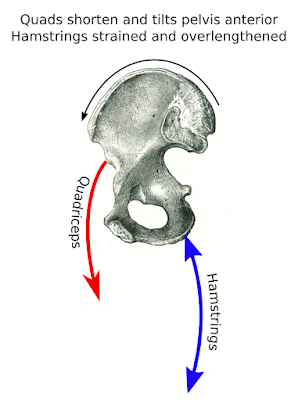Cupping as a Treatment for Pain and Accelerant to Healing.
From
the start of the 2016 Olympics in Rio, cupping has been in the news.
Athletes such as Michael Phelps have all been 'spotted' with very
regular circular bruise-like marks. It seems that the Olympics are
fast becoming the signature event for introducing the world to
alternative treatment modalities that, while popular among top
athletes, are little known among the general public.
 |
Image By Craig Maccubbin
(Flickr: Overhand Serve)
[CC BY 2.0
(http://creativecommons.org/
licenses/by/2.0)],
via Wikimedia Commons |
The
most obvious example was in the 2008 Beijing Olympics, where beach
volleyball powerhouse duo Kerri Walsh and Misty May dominated their
increasingly popular sport. Keri Walsh had a very colorful elastic
tape on her shoulder—and Kinesiotape's webpage hits went up from
about 600 views per day to 345,000 per day! Elite athletes had been
using Kinesiotape before this, but it was not usually visible under
their gear. Given that the women's beach volleyball uniform is a
basically a bikini, this tape became very visible. Since then,
Kinesiotape has become widely used by a wide range of health
practitioners, and by athletes from professionals to weekend
warriors.
Jumping
forward to this year, we see that legendary swimmer Michael Phelps is
bringing wide attention to another frequently used ‘alternative’
practice. But what is it, and what is it for?
 |
By Fernando Frazão/Agência Brasil [CC BY 3.0 br
(http://creativecommons.org/licenses/by/3.0/br/deed.en)],
via Wikimedia Commons |
Cupping
has its roots in ancient Chinese medicine, and has also been
practiced in ancient Egypt and the Middle East. Cupping uses fire to
create a vacuum in glass or bamboo cups, which are then adhered to
the skin. The fire (usually in the form of a cotton ball soaked in
alcohol) is held in the cup, thereby using up the oxygen and creating
a vacuum. The fire is then removed from cup, and the cup is quickly
placed on the skin. There are also vacuum pumped plastic cups and
silicon suction cups available which do not require the fire to
create a vacuum. In either case, the cups are left on for about 5-15
minutes. It’s also possible to do “moving cupping,” in which
the cups are moved over tight tissue.
There
are many possible uses of cupping in Chinese medicine, but treating
sore muscles from overuse and accelerating healing is what athletes
such as Phelps are looking for. When muscles become overly tight, the
added tension compresses capillaries—the very delicate, microscopic
blood vessels where oxygen and nutrients are exchanged between the
blood and the body's tissues, and where metabolic waste products move
from the tissues to the blood. This compression reduces blood flow
and oxygen to the muscles; as with any tissue that is not getting
adequate oxygen, pain and soreness and reduced healing time follows.
Cupping
decompresses the muscles and their connective tissue layers while
pulling stagnant blood to the surface. This stagnant blood is what is
observed as the purplish circle, which looks like a very symmetrical
bruise and lasts about a week. The amount of discoloration is
determined by the amount of suction, the amount of time the cups
remain in place, and by the amount of stagnation that was there in
the first place. As the stagnant blood is pulled to the surface,
fresh, oxygenated blood can move into the muscle, which can relieve
pain and increase healing time.
Many
people wonder if it hurts, which is not surprising since the mark
looks like a bruise, and cupping may be momentarily uncomfortable,
depending on the patient. The resulting discolored mark, however, is
not painful, and patients are often unaware of it if it is on their
back or some other spot they can’t see. I caution them to let their
partners know to expect it and not be alarmed at how dramatic the
mark looks until the discoloration diminishes. Not surprisingly, as
the procedure is repeated, the amount of discoloration is less each
time as the amount of stagnation and compression is reduced.

There
are variations to placing the cups on the body and having them remain
in place. A small amount of lubricant can be placed on the skin
before adhering the cups. The cups can then be moved while
maintaining suction. Or, the cups can be adhered to a region that is
particularly tight and the patient can be asked to perform slow
movements while the practitioner manipulates the cups. All of these
techniques can further serve as a type of myofascial release
(manipulation of the muscle and fascia) which can increase blood
flow, decompress the tissue, and restore proper range of motion. The
big difference is that, compared to deep tissue massage strokes,
which push down on and compress the muscles and connective tissue,
cupping lifts and decompresses
the muscles and connective tissue.
Cupping
has some positive research to back it up,
though
it is not extensively researched and more good quality studies would
be helpful for cupping to be accepted in the mainstream of medicine.
It is shown to have few adverse effects, and those that are reported
are mild.
1,2,3
If
you are an athlete
and looking to reduce healing time and increase performance, call
your local acupuncturist today to give cupping a try. You may find
that Michael Phelps is onto something!
References:
1.
Cao,
Huijuan, Xun Li, and Jianping Liu. “An Updated Review of the
Efficacy of Cupping Therapy.” Ed. German Malaga. PLoS
ONE 7.2
(2012): e31793. PMC.
Web. 11 Aug. 2016.
2.
Kim,
Jong-In et al. “Cupping for Treating Pain: A Systematic
Review.”Evidence-based
Complementary and Alternative Medicine : eCAM 2011
(2011): 467014. PMC.
Web. 11 Aug. 2016.
3.
Mehta, Piyush, and Vividha Dhapte. "Cupping Therapy: A Prudent
Remedy for a Plethora of Medical Ailments." Journal of
Traditional and Complementary Medicine 5.3 (2015): 127-34. Web.















